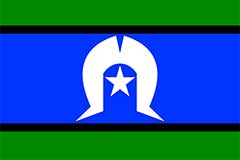Cemetery records can provide information about deaths, and can be useful when you can’t find a death certificate. They might provide other information about the deceased person and their immediate family, too.
What are cemetery records?
Two types of cemetery records – burial records and headstone inscriptions – record information about people who have died.
Burial records are records of the actual burial event. They vary in the amount of information they provide, but might contain:
- the name of the person who died
- their age at time of death
- the date of their death and/or burial
- where they lived
- who performed the ceremony and the name of the undertaker
- their religion
- the location of their grave in the cemetery
- names of other people buried in the same grave
- a transcription of the inscription on the headstone.
Burial records list all burials in a cemetery, even when there isn’t a headstone or plaque.
Headstone inscriptions are the words found in cemeteries on plaques, headstones and at gravesites. They often provide useful information not found elsewhere, particularly for early deaths where written records don’t exist or contain little detail.
You will not always find a headstone on a grave. Many people were buried in unmarked graves, and old headstones have often weathered, been destroyed or are hard to read. In this case you might be able to find information from registers published by local family history societies.
A number of ‘lonely graves’ projects around Australia are documenting graves that are outside recognised cemeteries, such as those on rural properties. Do an online search for ‘lonely graves’ to find information about the various projects.
Other death records you might also check are death notices, funeral notices, obituaries and in memoriam notices published in newspapers, and wills and probate records. Mission records might also contain information about Aboriginal people who died or were buried there.
What information do I need to look for cemetery records?
To start researching you need to know:
- the name of the person
- their place of death.
It can also be helpful to know:
- their place of burial, which is usually given on their death certificate.
If you don’t know where the person died or is buried, you might find this information by:
- looking at electoral rolls just before their death to find out their address or that of their children – it’s likely they were buried in a cemetery nearby
- searching historical newspapers in Trove for a death or funeral notice, which might give a place of burial.
Where do I find cemetery records?
Burial and cemetery records are kept by cemetery trusts, church authorities and local councils.
Many of these records have been published and can be searched online or at your local library, state library or family history society. Sometimes transcriptions or photographs of headstones are also available online, but often you will need to visit the cemetery itself.
- Australian Cemeteries Index
- National Library of Australia – Australian cemetery records
- CoraWeb – Cemeteries
- State Library of NSW – Deaths and burials
- State Library of Victoria – Cemetery records
- State Library of Queensland – Cemetery records
- State Library of SA – SA deaths
- State Library of WA – Aboriginal family history: Deaths and burials [PDF 230 kb]
- LINC Tasmania – Cemetery records




